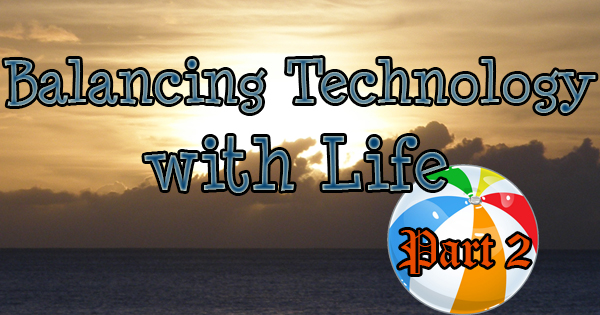
Last week, we suggested some ways that technology could not only balance, but enhance our daily lives. Google Calendar, Reminders iPhone app, and Gmail’s Vacation Responder were the focus. If you missed the Post, you can read Part One of “Balancing Technology with Life” by clicking here. We’re back today with part two. We’ll start off with information on tracking your fitness, because without your health, what do you have, really? Our next stop will be the Maps app that comes standard with any iPhone to help you decide where you are and where you’re going. Finally, we’ll wrap it up with an often under-utilized iPhone setting that just might help you unwind at the end of the day. We’ve got a lot to cover, so let’s dig in!
According to William Hardcastle Browne, “Health and cheerfulness are brothers.” Now I’m certainly no health nut, and might as well be allergic to green vegetables (though I eat better than I used to), but I am interested in how much physical activity I get each day. Since we had our daughter, I really started paying attention to how many steps I complete per day. You wouldn’t believe how many thousand you can do inside of an apartment! Anyway, since I’m always on call, my iPhone is perpetually in my pocket. Fortunately, an iOS update in 2015 included an app called (fittingly), “Health”. There’s an endless amount of information that can be put into the app, and it can sync with other apps and fitness trackers to keep all of your information in one place. Activities such as step counting, walking and running distance, and flights of stairs climbed are counted automatically, while cycling distance, swimming distance, swimming strokes, and standing hours, just to name a few, can be entered manually. Food intake can be added, health records and vital signs, and a cool Medical ID which lists name, age, height, weight, emergency contacts, blood type, medical notes and conditions, current medications, allergies, and even organ donation wishes. Paramedics are now trained to look for this information on an iPhone if the patient is unable to respond. If you’re not an iPhone user, or don’t like carrying your phone with you at all times, there are plenty of fitness trackers to choose from. Among the more popular fitness band brands (say that ten times fast) is Fitbit. At last count they offer eight products, with prices ranging from around $50 to $250. I received the Fitbit Blaze for my birthday, and highly recommend it. It’s a watch, plus fitness tracker, and it syncs via Bluetooth with my iPhone so calls, texts, and e-mails show up on my wrist. You can play music on your phone from the Blaze, and steps, heart rate, active hours, walking and running distance, calories burned, floors climbed, active minutes, and sleep are automatically tracked. For more information on the Fitbit product line, visit https://www.fitbit.com/home.
Fortunately for most of us, long gone are the days of the road atlas. Yes, it’s a good idea to keep one in your vehicle, just in case, but to me, the GPS is the greatest invention in modern history. If you ever traveled with my father, you’d agree. The Maps app on an iPhone is one of my most-used apps. Having turn-by-turn navigation is a huge help, but even when I know where I’m going, the traffic display is invaluable. Check it out for yourself. Open “Maps”, and you’re greeted with a blue dot showing your current location on the map. If you’ve never used the app, type an address or business name you’ll be traveling to in the “Search for a place or address” bar. When the address is found, tap the blue “Directions” button, and your route will load. Tap the green “Go” button, and navigation will begin. To display traffic on the map, tap the “i”. Tap the switch to the right of “Traffic” to enable. The switch will turn green. From now on, when you use Maps, construction will be displayed, road closures will be noted as a red circle with a white horizontal line in the center, and special information and accidents have their own indicators. Simply tap on a symbol for more information. Traffic is displayed as a line, dashed or solid. Each side of the road is identified. Basically, the longer the line is, the longer you’ll be waiting. Orange traffic is lighter than red. In my experience, the lines are very accurate, and you can gauge when traffic will clear just by looking at the app.
After all this exercising and driving, you’re probably getting tired. Before you can track your sleep, you’ll need to unwind first. If you’re still playing around on your iPhone, that might be easier said than done. Maybe you should try Night Shift. What is it? Here’s the description from Apple: “Night Shift automatically shifts the colors of your display to the warmer end of the color spectrum after dark. This may help you get a better night’s sleep,” With an infant, I’ve been sleeping pretty well so I’m not one to say whether or not it works, so give it a try and see for yourself. Tap “Settings”, then “Display & Brightness”, then “Night Shift”. You can schedule Night Shift to begin and end every day between specified hours, or you can turn it on manually. The colors can be adjusted to your liking. Night Shift takes a little getting used to, but might be just what the doctor ordered.
For years, people have stated that technology and “the machines” are everything that’s wrong with our society. Though it might be true in some cases, there are far more positive uses than negative ones. It’s important to always keep life in balance. Technology is no exception.
